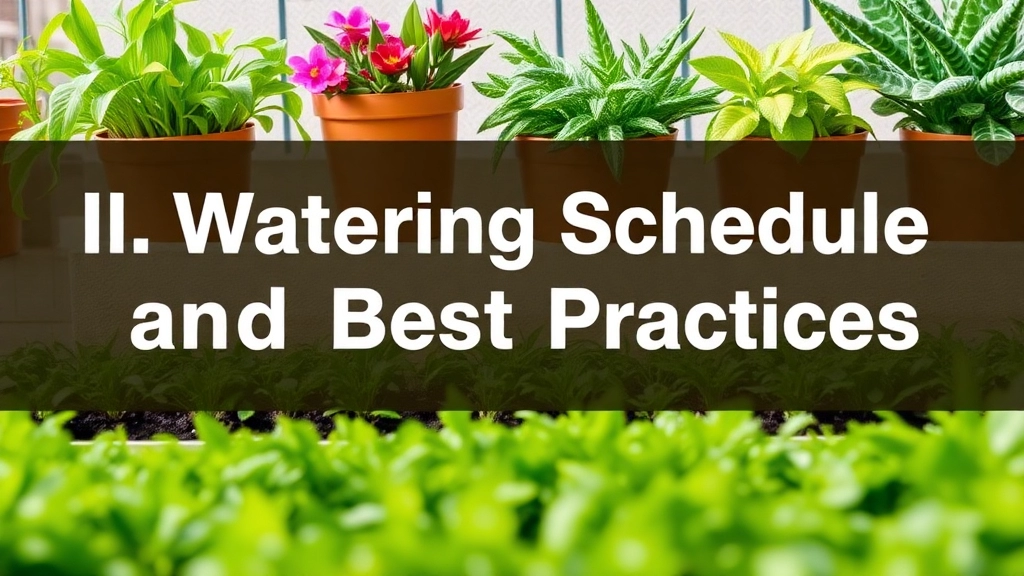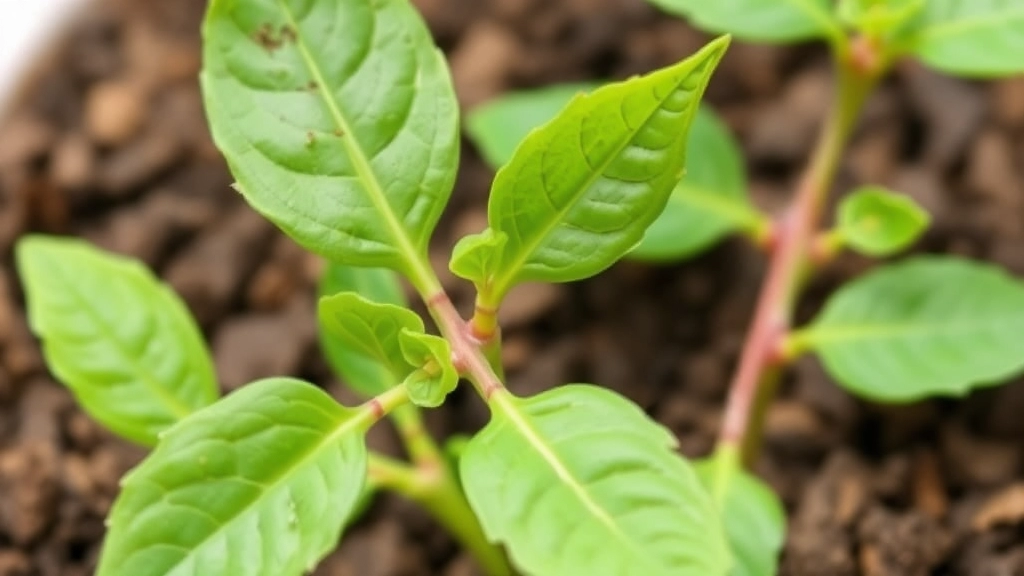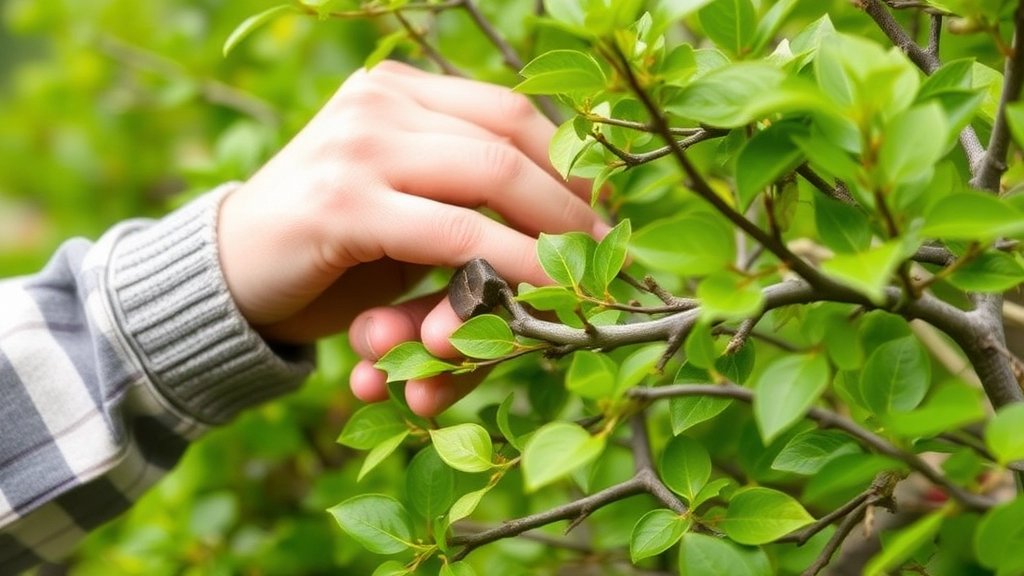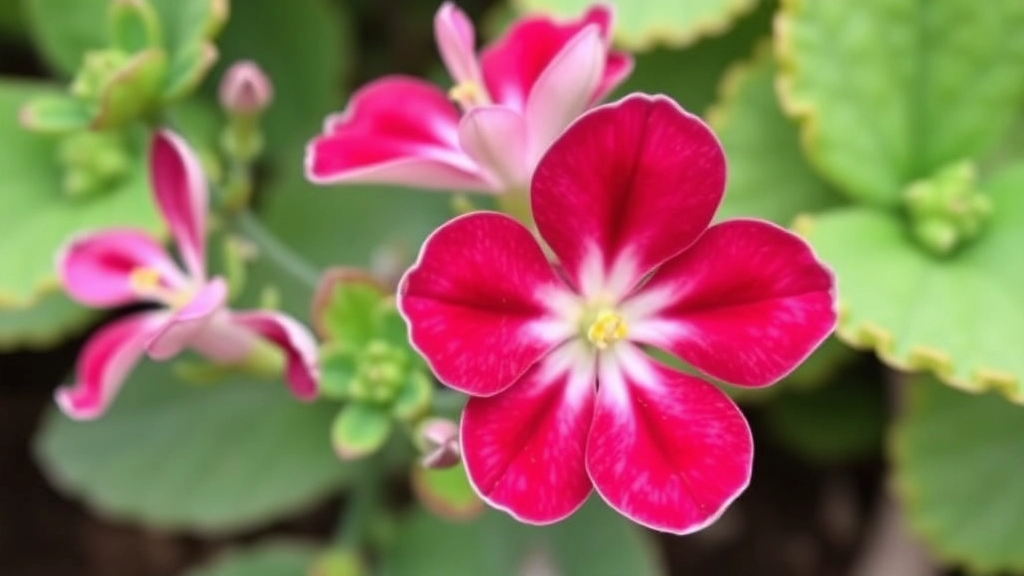Donkey Ear Kalanchoe Care
When it comes to Donkey Ear Kalanchoe care, the first thing to know is that these unique succulents thrive in bright, indirect light. Too much direct sunlight can scorch their leaves, so a spot near a sunny window is ideal. Watering is straightforward: let the soil dry out completely between waterings to avoid root rot, a common issue with succulents.
Soil and Potting
Soil and potting are crucial for healthy growth. Use a well-draining cactus mix, and ensure your pot has drainage holes.
Propagation
Propagation is a breeze with Donkey Ear Kalanchoe; simply take leaf or stem cuttings and let them callous over before planting. Watch out for pests like aphids and mealybugs, and prune regularly to encourage new growth.
Keep these tips in mind, and your Donkey Ear Kalanchoe will flourish!
Optimal Light Conditions for Donkey Ear Kalanchoe
Are you struggling to keep your Donkey Ear Kalanchoe thriving? One of the most crucial aspects of its care is ensuring it receives the right light conditions.
Understanding Light Needs
Donkey Ear Kalanchoe, or Kalanchoe luciae, flourishes in bright, indirect sunlight. Here’s how to create the perfect environment for your plant:
- Bright Indirect Light: Place your Kalanchoe near a window where it can soak up plenty of light but is shielded from direct sun, which can scorch its leaves.
- Avoid Low Light: Insufficient light can lead to leggy growth and reduced vibrancy. If your plant appears stretched or pale, it might be time to relocate it.
- Supplemental Lighting: If natural light is limited, consider using grow lights to provide adequate illumination, especially during the winter months.
Signs of Optimal Light
How can you tell if your Kalanchoe is happy with its light conditions? Look for these indicators:
- Healthy Leaves: Thick, plump leaves indicate your plant is receiving enough light.
- Vibrant Colour: Deep green or reddish hues suggest optimal health and light exposure.
For more detailed care information, you might find our Comprehensive Kalanchoe Plant Care Guide useful. Additionally, if you’re dealing with specific varieties, check out our Kalanchoe Mother of Millions Care Guide for essential tips.
II. Watering Schedule and Best Practices

Now that we’ve covered the optimal light conditions for your Donkey Ear Kalanchoe, let’s dive into one of the most crucial aspects of keeping it healthy: watering.
Many plant parents often wonder, “How much water does my Kalanchoe really need?”
Well, here’s the scoop:
- Frequency: Water your Donkey Ear Kalanchoe every 2-3 weeks during the growing season (spring and summer). In the winter months, you can stretch this to every 4-6 weeks.
- Soil Check: Always check the soil before watering. Stick your finger about an inch deep. If it feels dry, it’s time to water. If it’s still moist, hold off.
- Watering Method: When you do water, do it thoroughly. Let the water run through the drainage holes at the bottom of the pot. This ensures that the roots get a good drink.
- Avoid Overwatering: One of the biggest mistakes is overwatering. This can lead to root rot, which is a real nightmare for succulent lovers. Remember, Kalanchoes prefer to be on the drier side.
Tip: If you’re ever in doubt, it’s better to underwater than overwater. These plants are pretty forgiving!
Choosing the right soil for your Donkey Ear Kalanchoe is crucial for its health and growth. Many plant enthusiasts often worry about whether they’re using the right potting mix, and rightly so.
Donkey Ear Kalanchoe thrives in well-draining soil. Here are the key components to consider:
– **Cactus Mix**: A pre-made cactus or succulent mix works wonderfully. It ensures good drainage and aeration.
– **Perlite or Pumice**: Adding these materials can enhance drainage. Aim for about 25% of your mix.
– **Organic Matter**: A small amount of compost can provide essential nutrients without overwhelming the plant.
When it comes to potting your Kalanchoe, the right pot can make all the difference. Here are some tips:
– **Choose a Pot with Drainage Holes**: This prevents water from pooling at the bottom, which can lead to root rot.
– **Size Matters**: Select a pot that is slightly larger than the root ball. A pot that’s too big can retain excess moisture.
– **Consider Material**: Terracotta pots are excellent as they are porous and allow for air circulation.
Repotting can be a daunting task, but it’s essential for your plant’s growth. Here’s how to approach it:
– **Frequency**: Repot every 1-2 years, or when you notice roots growing out of the drainage holes.
– **Timing**: Early spring is the best time to repot, as your plant is coming out of dormancy.
– **Gentle Handling**: Be careful not to damage the roots when transferring to a new pot.
For more detailed guidance on caring for your Donkey Ear Kalanchoe, check out our [Donkey Ear Kalanchoe Care Guide](https://planthq.org/donkey-ear-kalanchoe-care-guide-light-water-soil-and-more/). Additionally, if you’re interested in learning about other Kalanchoe varieties, our [Complete Guide to Growing and Caring for Kalanchoe Pink Butterflies](https://planthq.org/complete-guide-to-growing-and-caring-for-kalanchoe-pink-butterflies/) offers valuable insights.
Propagation Techniques: Leaf and Stem Cuttings

When considering how to expand your collection of Donkey Ear Kalanchoe, propagation through leaf and stem cuttings is an effective and rewarding method.
Leaf Cuttings
- Select Healthy Leaves: Choose mature, healthy leaves from the parent plant. Avoid any that show signs of damage or disease.
- Cut the Leaves: Using a clean, sharp knife or scissors, cut the leaves at the base, ensuring you leave a small portion of the stem attached.
- Drying Time: Allow the cuttings to dry for a few days in a shaded area. This helps to form a callus, which reduces the risk of rot when planted.
- Planting: Once calloused, place the leaf cuttings in a well-draining soil mix. Position them upright, with the cut end buried slightly in the soil.
- Water Sparingly: Mist the soil lightly and place the pot in a warm, bright location. Avoid overwatering, as this can lead to rot.
Stem Cuttings
- Choose a Healthy Stem: Look for a healthy stem that is at least a few inches long and has several leaves.
- Make the Cut: Cut the stem just below a leaf node using clean, sharp tools.
- Let it Callous: Similar to leaf cuttings, let the stem cutting dry for a few days to form a callus.
- Planting: Insert the cutting into a suitable potting mix, burying it slightly to anchor it.
- Care: Water lightly and keep it in a warm, well-lit area until roots develop.
These propagation techniques not only allow you to multiply your plants but also provide a sense of accomplishment as you watch new growth emerge.
Common Pests and How to Prevent Them
As we delve deeper into caring for your Donkey Ear Kalanchoe, it’s crucial to address a common concern: pests.
Have you noticed tiny insects or discolouration on your plant?
Pests can quickly turn a thriving Kalanchoe into a struggling one. Here are the most common pests you might encounter and effective prevention strategies:
Common Pests
- Mealybugs
- These pests appear as small, white cottony masses on the leaves and stems.
- They suck the sap, leading to yellowing leaves and stunted growth.
- Spider Mites
- Tiny and often hard to see, spider mites create fine webs on the plant.
- They thrive in dry conditions and can cause leaf drop.
- Aphids
- Small and green, aphids cluster on new growth.
- They also feed on sap and can transmit diseases.
Prevention Strategies
- Regular Inspection
- Check your plant weekly for any signs of pests.
- Early detection is key to effective treatment.
- Maintain Humidity
- Spider mites love dry air.
- Increase humidity around your plant by misting or using a pebble tray.
- Use Neem Oil
- A natural pesticide, neem oil can deter many pests.
- Spray it on your Kalanchoe every two weeks as a preventative measure.
- Isolate Affected Plants
- If you spot pests, isolate the affected plant immediately.
- This prevents the spread to your other plants.
- Encourage Beneficial Insects
- Ladybugs and lacewings feed on aphids and other pests.
- Consider introducing them to your garden or indoor space.
For more detailed care tips, you can refer to our complete guide to growing and caring for Pink Kalanchoe plants. Additionally, if you’re dealing with specific issues like leaf discoloration, our article on why Kalanchoe leaves turn brown might be helpful.
VI. Pruning Tips for Healthy Growth

So, you’ve got your Donkey Ear Kalanchoe thriving in optimal light and you’re nailing the watering schedule. But what about pruning?
Pruning is essential for keeping your plant healthy and looking fabulous. It can feel a bit daunting, but trust me, it’s easier than you think. Here’s how to do it right:
- Timing is Key: The best time to prune your Kalanchoe is during the growing season, typically in spring or early summer. This way, your plant can bounce back quickly.
- Use Clean Tools: Always use sharp, clean scissors or pruning shears. This helps prevent any nasty infections.
- Focus on the Dead and Dying Leaves: Start by removing any leaves that look yellow or shrivelled. This keeps your plant looking fresh and encourages new growth.
- Shape It Up: Don’t be afraid to trim back any leggy stems or branches. This helps maintain a compact shape and encourages bushier growth.
- Take Cuttings for Propagation: If you’re feeling adventurous, use those cuttings to propagate new plants. It’s a win-win!
- Avoid Over-Pruning: Just like with a haircut, less is often more. Too much pruning can stress your plant, so take it easy.
Pruning not only boosts your plant’s health but also enhances its aesthetic appeal.
Temperature and Climate Requirements for Donkey Ear Kalanchoe
When considering the care of your Donkey Ear Kalanchoe, temperature and climate are crucial factors that can significantly impact its growth and overall health.
Ideal Temperature Range
- Daytime: 20°C to 25°C (68°F to 77°F)
- Nighttime: 10°C to 15°C (50°F to 59°F)
This succulent thrives in warm environments, making it an excellent choice for indoor settings where temperatures can be easily controlled. However, it’s essential to avoid extreme temperature fluctuations.
Climate Considerations
- Humidity: Low to moderate humidity levels are ideal.
- Air Circulation: Ensure good airflow around the plant to prevent fungal issues.
If you live in a colder climate, be cautious during winter months. Avoid placing your Donkey Ear Kalanchoe near drafty windows or heating vents, as sudden cold drafts or excessive heat can stress the plant.
Seasonal Changes
- Spring and Summer: This is the active growth period. Maintain the ideal temperature range for optimal growth.
- Autumn and Winter: While the plant can tolerate cooler temperatures, aim to keep it above 10°C (50°F) to prevent damage.
For more detailed care tips, you can refer to our Kalanchoe Panda Plant Care Guide and learn how to propagate Kalanchoe from leaves successfully.
FAQs on Donkey Ear Kalanchoe Care
How often should I water my Donkey Ear Kalanchoe?
Water your Donkey Ear Kalanchoe every 2-3 weeks during the growing season (spring and summer). In the winter months, you can stretch this to every 4-6 weeks. Always check the soil before watering; if it feels dry about an inch deep, it’s time to water.
What is the best way to water my Kalanchoe?
When watering, do it thoroughly. Let the water run through the drainage holes at the bottom of the pot to ensure the roots get a good drink. Avoid overwatering, as it can lead to root rot.
How can I propagate my Donkey Ear Kalanchoe?
You can propagate your Kalanchoe using leaf and stem cuttings. For leaf cuttings, select healthy leaves, let them dry to form a callus, and then plant them in well-draining soil. For stem cuttings, choose a healthy stem, let it callous, and then plant it in a suitable potting mix.
When is the best time to prune my Kalanchoe?
The best time to prune your Kalanchoe is during the growing season, typically in spring or early summer. This allows the plant to recover quickly and promotes healthy growth.
What tools should I use for pruning?
Always use sharp, clean scissors or pruning shears to prevent infections. Focus on removing dead or dying leaves and trim back leggy stems to maintain a compact shape.
Can I use cuttings from pruning for propagation?
Yes, you can use the cuttings from pruning to propagate new plants. This not only helps in maintaining the plant’s shape but also allows you to expand your collection.
What should I avoid when pruning my Kalanchoe?
Avoid over-pruning your plant. Too much pruning can stress the plant, so it’s better to prune less rather than more. Focus on removing only the necessary parts to keep your plant healthy and attractive.
References
-
Gardening Know How: Kalanchoe Watering Guide
-
The Spruce: Propagating Kalanchoe
-
Houseplant 411: Pruning Kalanchoe Plants
